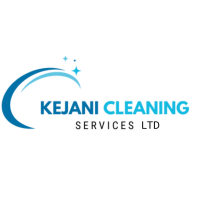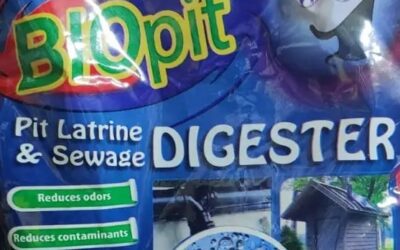In Kenya, waste management is a major concern for homes, institutions, and commercial properties. Whether you use a biodigester, septic tank, or traditional pit latrine, maintaining these systems is crucial to hygiene, efficiency, and cost savings. One of the most effective ways to do this is through the use of waste digesting chemicals.
This guide breaks down how biodigester chemicals, septic tank chemicals, and pit latrine digesters work, how to use them safely, and the differences between them.
1. What Are Biodigester Chemicals?
What They Are:
Biodigester chemicals are typically enzyme-based or microbial solutions that are introduced into a biodigester tank to help in the digestion of organic waste.
How They Work:
- They contain anaerobic bacteria and enzymes that digest human waste, breaking it down into water and gas.
- These bacteria speed up decomposition and keep the system functioning smoothly.
- The end result is a non-toxic, odorless effluent that can safely drain into the environment through a soak pit.
Key Benefits:
- Prevents solid waste buildup
- Eliminates odor
- Speeds up breakdown of tissue, feces, and food particles
- Enhances flow to the soak pit
How to Use:
- Determine tank capacity (e.g., 1000L, 2000L).
- Shake or mix the solution as directed.
- Flush the required amount into your toilet or pour into the access point of the biodigester.
- Repeat monthly or quarterly depending on usage.
Important Note: Avoid pouring bleach or strong detergents into a biodigester tank as they can kill the beneficial bacteria.
2. What Are Pit Latrine Chemicals?
What They Are:
Pit latrine digesters are typically microbial formulations or enzyme powders meant for use in VIP latrines, rural pit toilets, and temporary site toilets.
How They Work:
- The bacteria in these chemicals digest organic waste, including feces and toilet paper.
- They liquefy solids, reducing the fill-up rate of the pit.
- Odor-neutralizing agents target gases like ammonia and hydrogen sulfide.
- Some also kill harmful pathogens, improving sanitation.
Key Benefits:
- Eliminates foul smells
- Slows down how quickly the pit fills
- Minimizes risk of overflow or backup
- Makes the environment more tolerable for users
How to Use:
- Identify the size of your latrine.
- Apply the powder or liquid directly into the pit.
- Avoid pouring bleach, disinfectants, or boiling water after treatment.
- Reapply monthly or based on the number of users.
Ideal for schools, rural homes, construction sites, or churches.
3. What Are Septic Tank Chemicals?
What They Are:
These can be either biological additives (preferred) or chemical cleaners. Septic systems are common in peri-urban areas and some residential estates in Kenya.
How They Work:
- Biological products introduce healthy bacteria and enzymes to digest waste.
- Chemical products dissolve clogs and kill odor but may harm useful bacteria.
- They reduce the buildup of grease, solids, and fats in the tank.
Key Benefits:
- Keeps the system flowing
- Prevents expensive pump-outs
- Minimizes odors and blockages
How to Use:
- Choose a biological septic tank treatment.
- Flush the treatment into your toilet or pour it into the septic tank access.
- Repeat monthly for best results.
Caution: Stay away from chemical drain openers or strong acids as they can damage your tank and the environment.
Comparison Table
| Feature | Biodigester Chemicals | Pit Latrine Chemicals | Septic Tank Chemicals |
|---|---|---|---|
| System Type | Sealed, enzyme-based tanks | Traditional pit latrines | Concrete/underground tanks |
| Main Action | Breaks waste into water & gas | Liquefies solids, kills odor | Breaks down waste & grease |
| Type Preferred | Enzyme/bacterial | Enzyme/bacterial | Biological (not chemical) |
| Usage Frequency | Monthly | Monthly/Bimonthly | Monthly |
| Application | Flush into toilet/tank | Pour into pit directly | Flush or pour into tank |
| Safe for Environment | Yes | Yes | Yes (if biological) |
Common Questions
Can these chemicals melt pipes?
No. When used correctly, they are non-corrosive and designed for safe application in their respective systems.
Are they safe for the environment?
Biological products are eco-friendly. Avoid chemical variants unless they’re specifically approved for environmental safety.
What if I see no improvement?
This could be due to:
- Overuse of disinfectants
- Clogged outlets (especially in septic systems)
- Incorrect dosage or irregular application
Consult your supplier or plumber for help.
Final Thoughts
Maintaining your sanitation system with the right chemical treatment is a smart and cost-effective solution. Whether you manage a home, school, church, or office, choosing the correct waste digester for your setup will extend the lifespan of your system, prevent health hazards, and save money on emptying costs.
If you’re looking for biodigester chemicals, pit digester solutions, or septic tank treatments in Kenya, Kejani Cleaning Services Limited stocks a wide range of effective, eco-friendly solutions for residential, commercial, and institutional clients.
Explore our range at:
Need Help Choosing the Right Product? Contact Kejani Cleaning Services Limited for free consultation and bulk supply for schools, hospitals, churches, and commercial buildings.




0 Comments